
Homegrown perennial herbs are a great addition to any garden and offer multiple rewarding uses. Many herbs have nutritional and therapeutic benefits that work well in cooking, teas, aromatherapy, and more. So if you’re looking for herbs that will grow more than one season, check out our list of the 12 best perennial herbs that come back every year. These herbs are easy to grow in garden beds and containers.
Keep reading to the end of this perennial herb post for quick tips for starting your own herb garden. Growing herbs might be easier than you think, especially if you start with the 12 easy-growing herbs we recommend for gardeners of all experience levels.
1. Chives
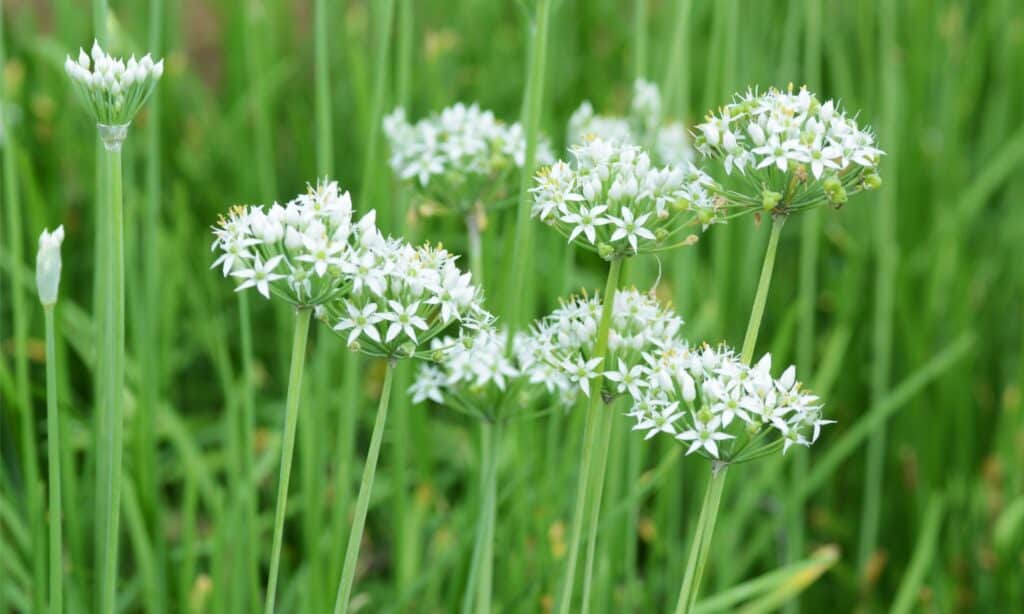
Chives are very easy to grow.
©iStock.com/undefined undefined
A member of the onion family, chives are one of the easiest herbs to grow and a good source of essential vitamins A and C. As a result, they make a great addition to dishes like soups, salads, and potato recipes.
Grow chive plants in well-drained soil in an area that receives full sun. Water these onion-scented perennial herbs regularly, and fertilize them once every spring.
Your ready-to-harvest chives will look like small, green onions with long thin stalks. Harvest the chives by cutting them back (close to the ground) in early summer. They will quickly regrow and be ready to harvest again in late summer.
2. Sage
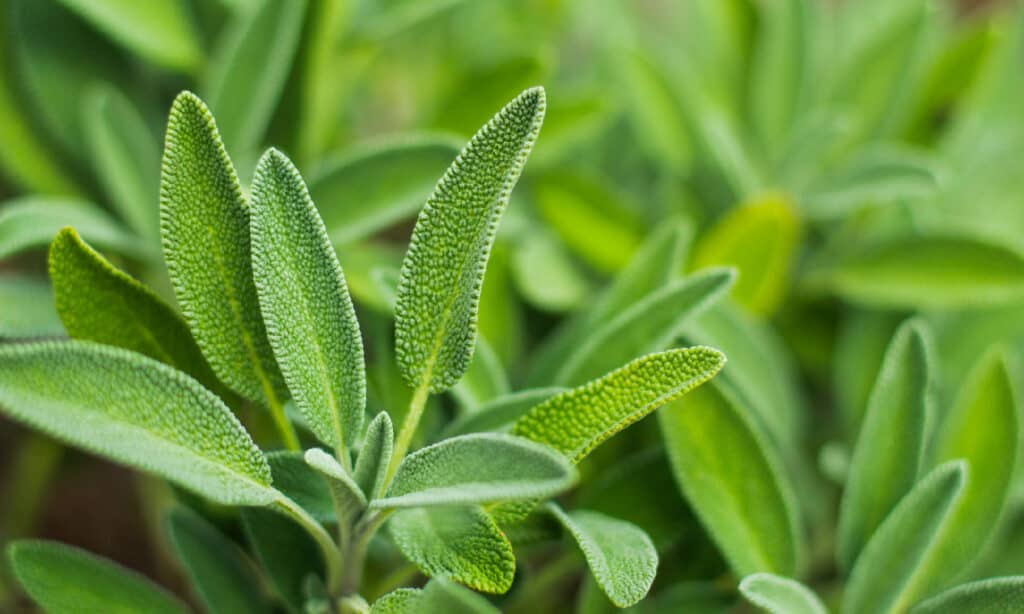
Sage can be used to make tea.
©iStock.com/Bonnie McCann
Perennial sage is a versatile herb savored in many different dishes, like stuffing for poultry or pork. Sage has a distinct almost-peppery flavor perfect for autumn and winter recipes. The sage plant’s leaves are also used for infused oils and for making teas.
Grow sage plants in full sun or partial shade. This perennial herb prefers well-drained soil, watered regularly. Once established, sage is relatively drought tolerant. However, it’s wise not to harvest sage the first year of planting unless you do so very lightly. This practice will help plants produce even better in the second year.
Harvest sage leaves by cutting each plant back by one-third in early spring to promote new growth. Plus, consider cutting back sage after it blooms to keep the plant from getting too leggy. Sage is typically ready to harvest in late summer or early fall.
3. Thyme
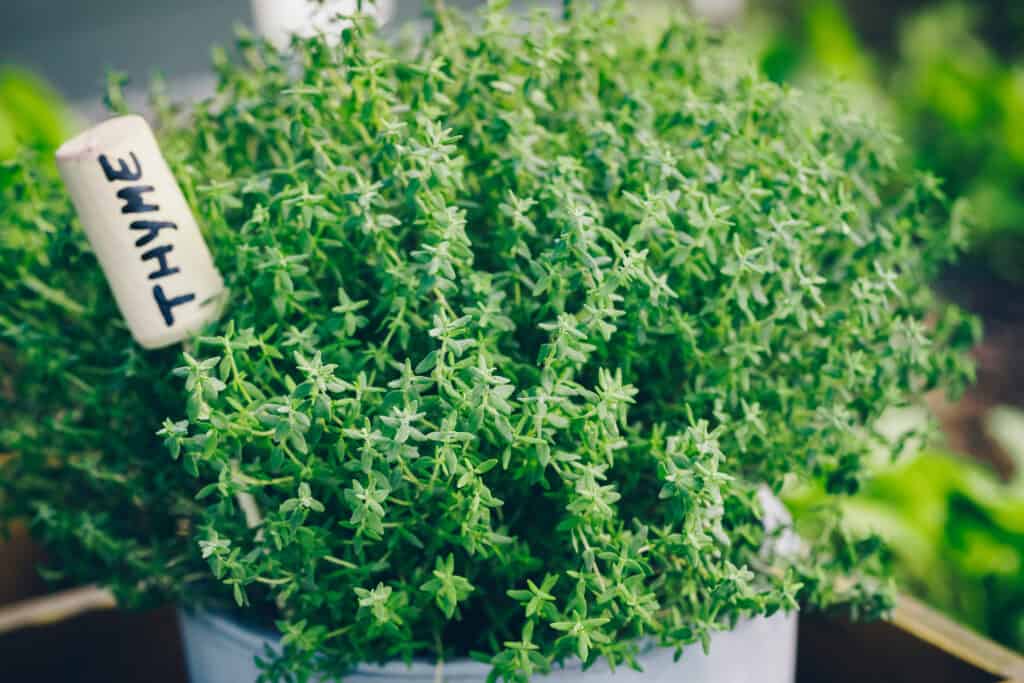
The usage of thyme extends to soups, sauces and vegetables.
©iStock.com/wmaster890
Thyme is another perennial herb loved for its flavor for cooking and scent in the garden. It has a milder taste than sage and works well added to soups, sauces, vegetables, and meats. Thyme is a common ingredient in cooking herb blends like bouquet garni and herbes de Provence.
To grow thyme in a home garden, start with seeds or young plants. Thyme prefers full sun but will tolerate some shade. It is a drought-tolerant herb, so it does not need much water. Well-drained, sandy soil is ideal for thyme. Trim them regularly to keep thyme plants compact and prevent them from getting leggy.
Harvest thyme by cutting the stems just above a leaf node. Thyme can be dried or used fresh.
4. Mint
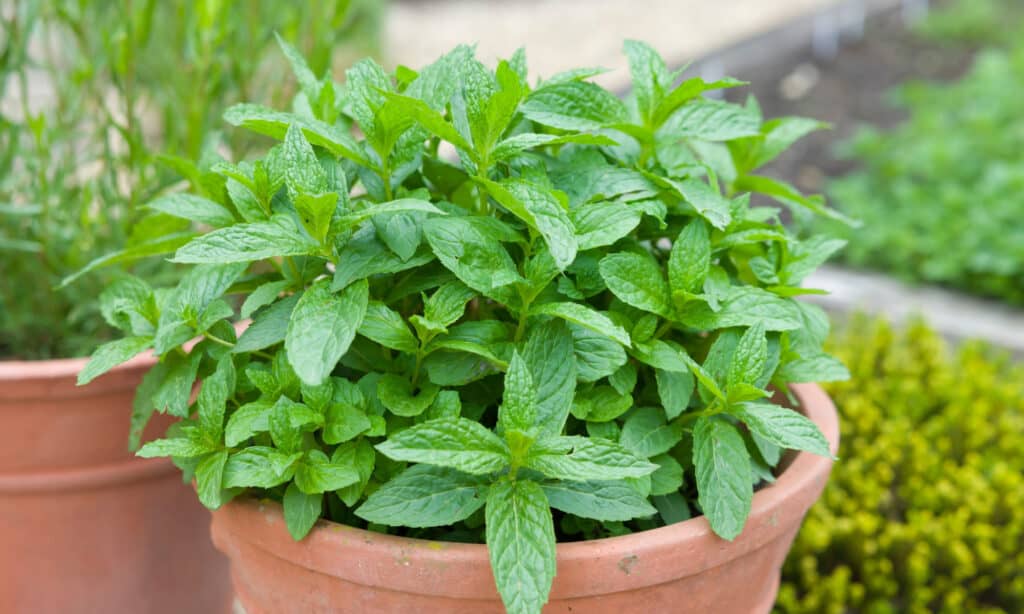
You can either grow mint in containers or on the ground.
©Paul Maguire/Shutterstock.com
Mint is a refreshing herb that takes over every garden bed it touches! So growing this self-seeding perennial herb is very easy and perfect for beginner herb gardeners. Plus, mint tastes great in teas, smoothies, salads, and desserts. We recommend making a simple berry-mint smoothie with fresh mint leaves in a blender. Then, add plain yogurt, the berries of your choice, and honey, and enjoy!
Mint grows well in containers or on the ground. If you are growing mint in a container, make sure that the pot has good drainage. It prefers a sunny location but will also do well in partial shade.
Water the plant regularly and fertilize it every few weeks. In addition, mint is a fast-growing plant, so you may need to trim it back occasionally to keep it from getting too big.
Mint leaves are best when harvested while young and tender. Then, you can use fresh or dry them for later use.
5. Rosemary
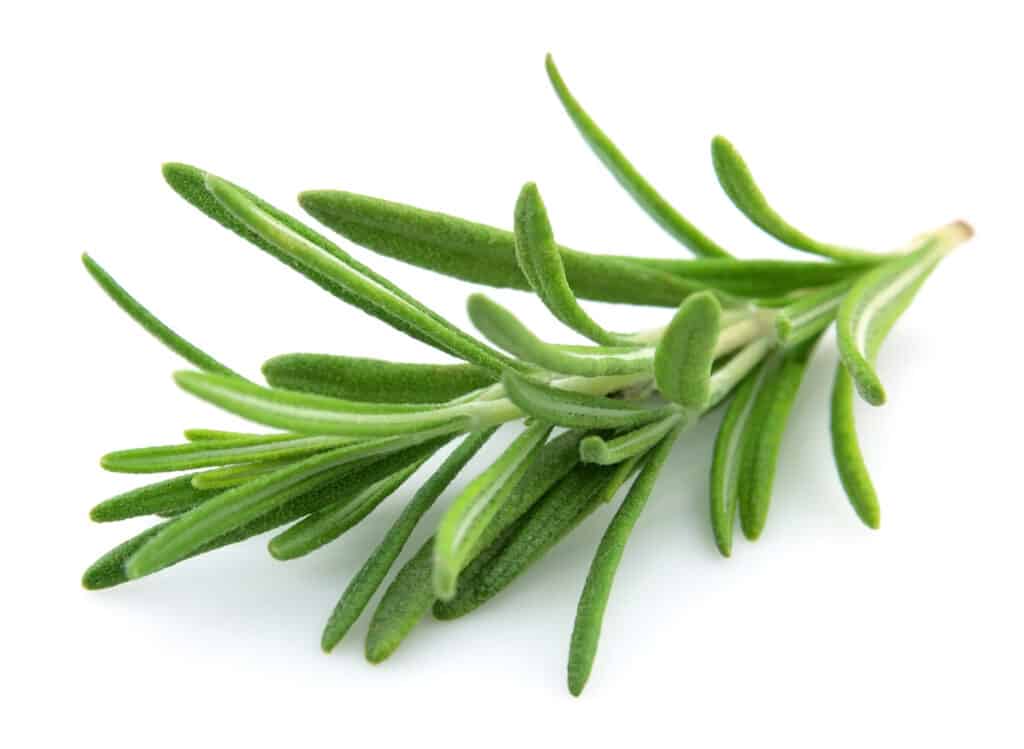
Rosemary grows better in well-drained soil.
©iStock.com/Volosina
Perennial rosemary is a woody herb that has a strong flavor. It’s a common ingredient in Italian and Mediterranean dishes, like pasta sauces, roast chicken, or fish.
And here’s a fun fact – the rosemary plant looks like a mini Christmas tree! So, for this reason, the rosemary plant makes a festive decoration in the kitchen or dining room table.
Rosemary prefers full sun and well-drained soil. However, it is best to plant it in an area that gets some afternoon shade during overly hot summer days. To help improve drainage, mix in some sand or organic matter when you plant rosemary.
Water rosemary regularly, especially during the hot summer months. However, as with most herb plants, don’t let the soil get too soggy. It is drought tolerant so it can withstand periods of dryness.
Rosemary doesn’t need a lot of fertilizer. Still, you can give it a light feeding in the spring with an all-purpose fertilizer. Trim it regularly to keep it looking its best. Then, consider using the trimmings to make rosemary oil or infused vinegar.
Rosemary is susceptible to root rot and fungal diseases. To prevent these problems, water at the base of the plant and avoid getting the leaves wet. Immediately remove affected leaves and stems, like powdery mildew, if you see any signs of rosemary disease.
6. Oregano
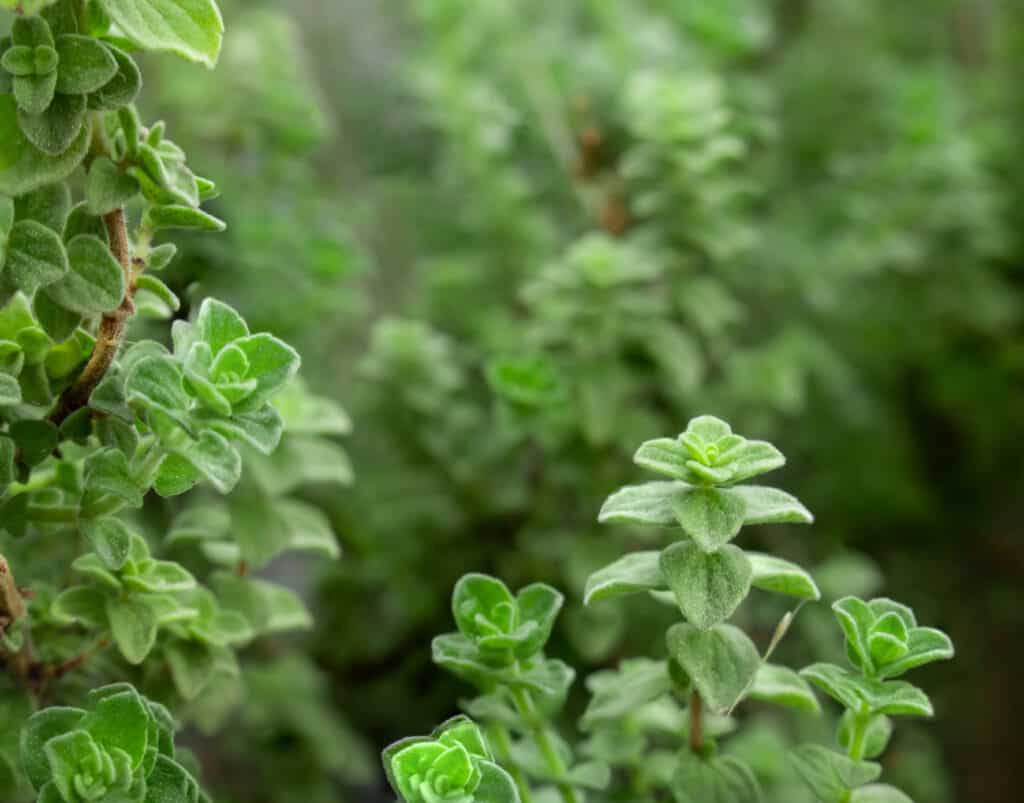
The oregano does not require much maintenance.
©Artem Kontratiev/Shutterstock.com
Oregano is a popular garden herb and a member of the mint family, closely related to marjoram, thyme, and basil. It grows in a home garden with relative ease and tastes great in countless recipes. For example, you can use oregano to flavor tomato-based sauces, pizza, and chicken. Plus, pesto with garlic and fresh oregano is a delicious treat with pasta or veggies!
Oregano prefers full sun but will tolerate some shade. This herb is a hardy plant that does not require much maintenance. It grows best when planted in the spring or fall. If planting in the spring, start oregano from seedlings. If planting in the fall, direct sow the seeds.
Once oregano plants are established, they do not need much water. Unfortunately, too much water can make the flavor less potent.
Once the plant blooms, oregano flowers should be cut off (deadheaded) to encourage leaf growth. Then use the harvested leaves as either fresh or dried.
To dry oregano, tie the stems together to hang upside down in a cool, dark place. Once the leaves are completely dry, strip them from the stem and store them in an airtight container. Dried oregano will retain its flavor for about a year, but it might take 4-6 weeks to be fully dry for storage.
7. Cilantro
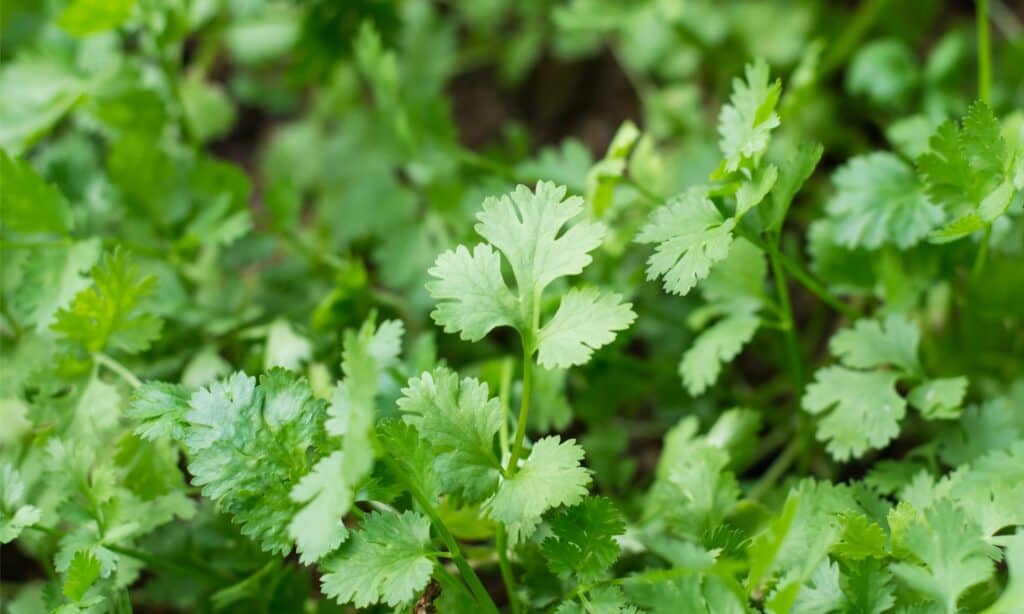
The cilantro is a fast-growing plant.
©iStock.com/Tevarak
Cilantro is a fresh herb often used in Mexican and Asian cuisine. It has a unique flavor that some people love and some hate! Enjoy fresh or dried cilantro in dishes like guacamole, salsa, soup, and stir-fry if you’re in the cilantro-love camp.
Perennial cilantro is a fast-growing crop, so it’s best to sow the seeds every few weeks for a continuous supply of fresh leaves. This herb prefers full sun but can handle some shade. It also needs well-drained soil.
Give cilantro plants full sun to partial shade. They need well-drained, moist soil and consistent watering, especially during hot weather.
Harvest your cilantro as soon as the plants reach 6 inches tall, then cut the entire plant back to 2-3 inches above ground level. This cutting will encourage new growth, so cilantro plants continue to produce leaves throughout the growing season.
8. Basil
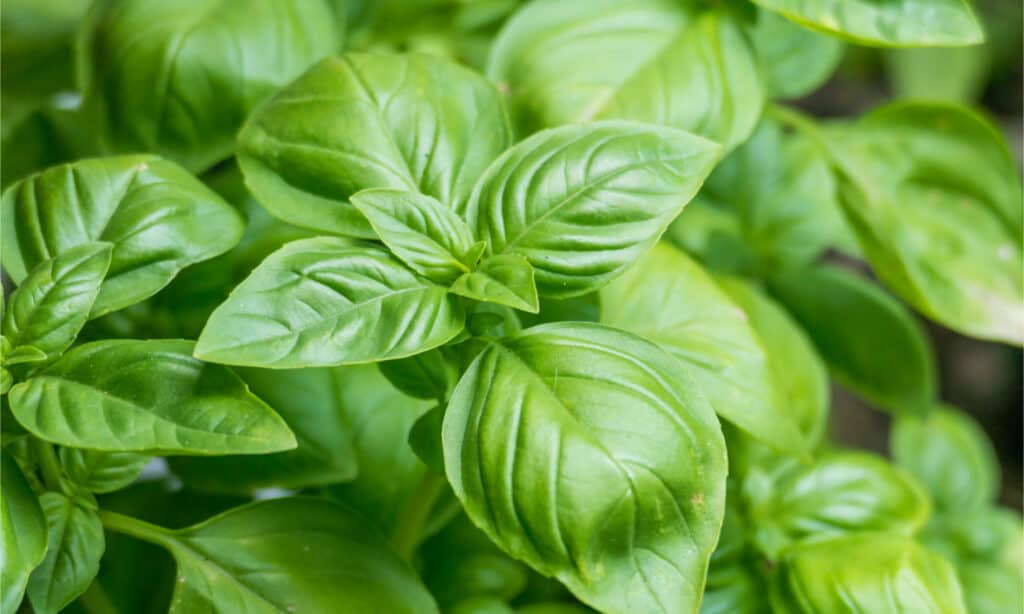
You can grow basil in pots or on the ground.
©David Jalda/Shutterstock.com
Basil is a sweet herb often used in Italian and other cuisines. We like to think of basil and tomatoes as best friends forever because they complement each other in food recipes beautifully. It is delicious when eaten fresh or dried. And it’s without a doubt one of the 12 best perennial herbs that come back every year!
Basil plants look like small shrubs and have shiny green leaves. These perennial herbs grow up to 2-3 feet tall but are usually around 18 inches at maturity. A great time to plant basil is in the spring after the last frost date.
Grow basil plants in pots or on the ground in sunny areas. Water regularly and fertilize every spring. Start harvesting the leaves when they are about 6-8 inches tall.
To dry basil, hang the plants upside down in a dark, dry place. Once the leaves are dry, store them in an airtight container.
9. Parsley
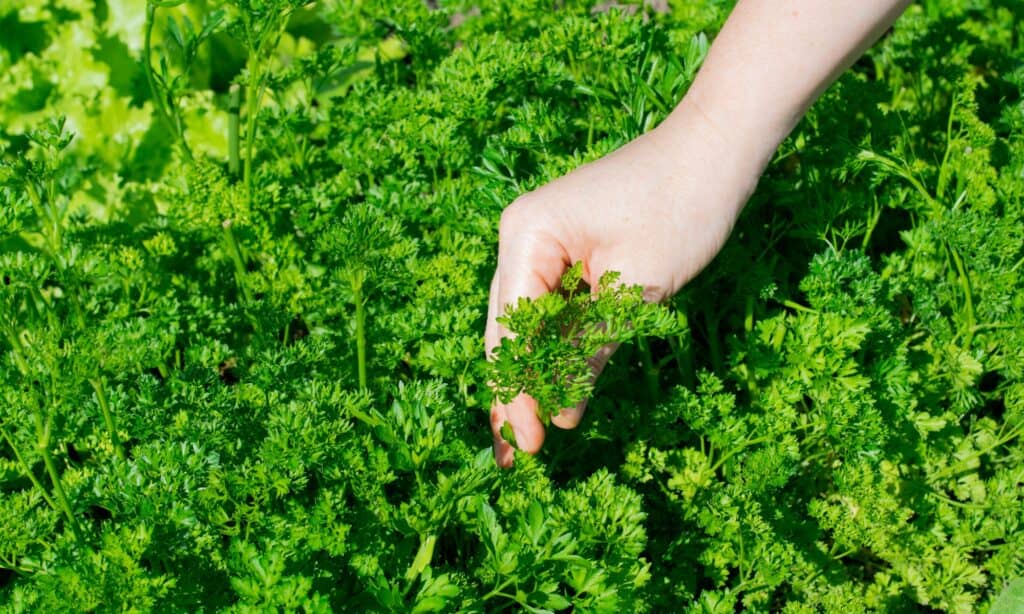
Parsley has both curly and flat-leaf varieties.
©iStock.com/Oksana Chaun
Parsley is a popular cooking herb and a good source of antioxidants. In addition, many dishes, like soups and roasted vegetables, benefit from parsley’s peppery and earthy flavor. However, it isn’t exactly a perennial herb. Instead, parsley is a biennial herb that takes two years to complete its life cycle. So, parsley should come back every other year.
You’ll recognize a parsley plant by its bright green leaves, which are either flat or curly. It grows up to 24 inches tall.
If you are growing parsley outdoors, it is best to plant it in the spring. Choose a spot in your herb garden that gets plenty of sunlight. Water your parsley plants regularly, and fertilize them 1-2 times per season.
Harvest parsley when they are 18-24 inches tall, but do so in the morning when their flavor is the strongest.
10. Dill
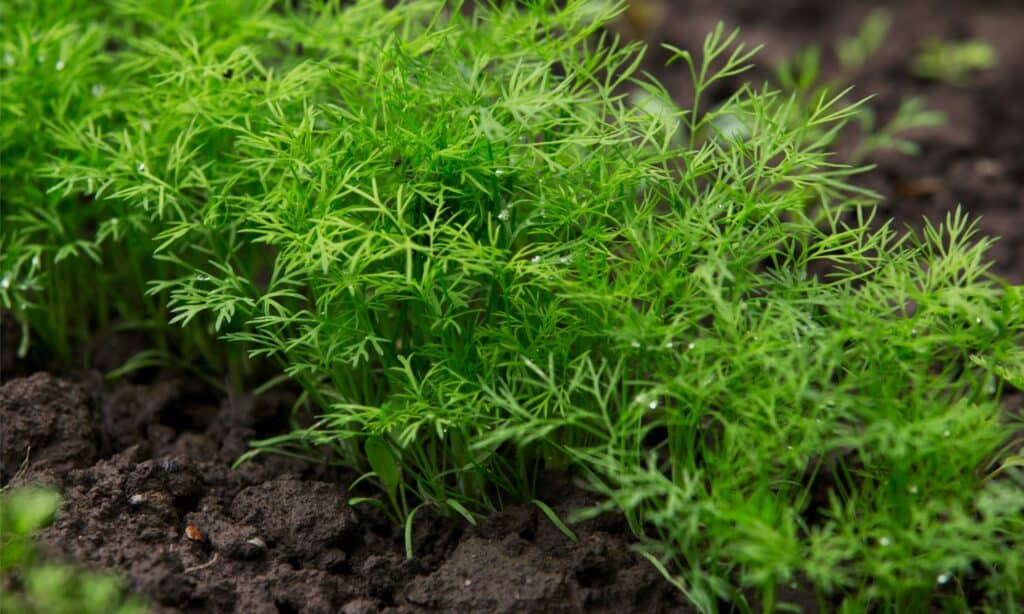
Transplanting dill can be quite difficult.
©iStock.com/DevidDO
Dill is a refreshing herb used in many different ways. This aromatic plant works excellent for pickling foods and pairs well with fatty fish like salmon. Perennial dill has a slightly sour and salty taste and smells like a combination of anise and parsley.
Dill is a tall herb that can grow up to 4 feet tall. It has long, slender leaves and small yellow flowers. However, it’s challenging to transplant dill from one pot or garden bed to another. So plant it where you want it to grow to maturity.
Plant dill in the spring in a spot that gets plenty of sunlight. And as with all the herbs on this list, water it daily, fertilize it in the spring and watch for garden pests like aphids. In fact, aphids love dill so much that people often grow it near their other plants to protect them from aphid appetites.
11. Marjoram
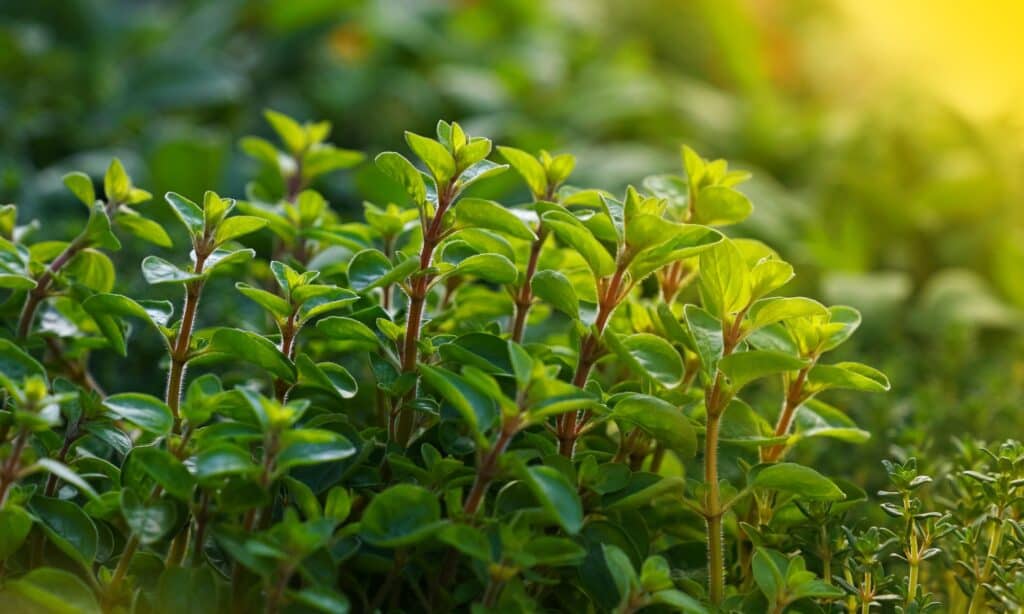
You can grow marjoram plants in full sun or partial shade.
©iStock.com/BreakingTheWalls
Marjoram is a sweet herb related to both oregano and mint. Its fresh or dried leaves season many cuisines, like Italian and French. Marjoram adds a bit of earthy sweetness to teas, sauces, and recipes like sauteed carrots with lemon.
Grow marjoram plants in full sun to partial shade, with well-drained soil rich in organic matter. Water marjoram enough for consistently moist (but not soggy) soil. Soak marjoram seeds overnight before placing them in the soil about 12 inches apart.
To dry marjoram, cut the stems and hang them upside down in a dark, dry place. Once the leaves are dried, strip them from the stems and store them in an airtight container.
12. Lavender
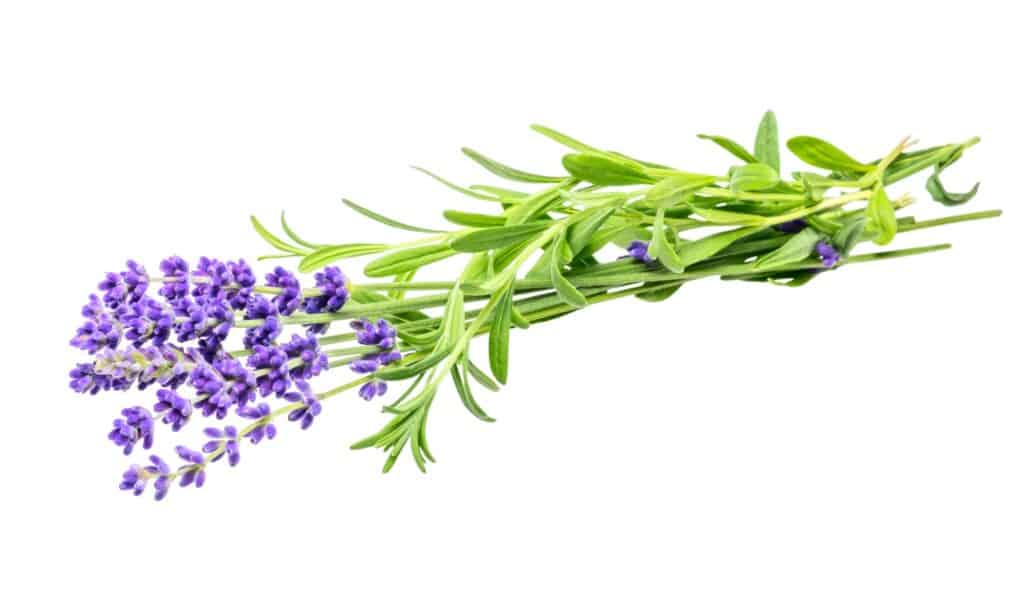
You can grow lavender for its therapeutic properties.
©iStock.com/Olesia Bekh
Lavender is a highly fragrant herb in the mint family known for its therapeutic properties. You could make teas, soaps, salves, and lotions with your homegrown lavender. In addition, lavender works well in recipes from blueberry tarts to beet salad.
The lavender plant looks like a small shrub and can grow 2-3 feet tall. It has long, slender leaves and purple flowers on tall stalks.
The best conditions for growing lavender include full sun and well-drained soil. This herb does not like to be waterlogged, so make sure the soil you choose drains well. Then plant your lavender plants in the spring or fall.
To harvest lavender, cut the stems in the early morning when the flowers are just beginning to bloom. Plus, harvesting in early spring will allow lavender plants to bloom again in the same growing season.
Dry the flowers to use in body care products, sachets, or potpourris. In addition, fresh lavender leaves are beautiful as a garnish for cakes and other desserts.
Quick Tips for Growing a Perennial Herb Garden
If you’re interested in growing your own perennial herbs, you should keep a few things in mind. These easy guidelines will help you get started to enjoy fresh herbs all year long!
- Choose the right location. Ensure you have enough space for the type of herb garden you want to create. When choosing a spot, consider things like sunlight and drainage. Most herbs need full sun for the best plant performance.
- Prepare the soil. Herbs prefer well-drained, nutrient-rich soil. You can either grow them in pots filled with good quality potting mix or improve ground soil by adding garden compost or other organic matter.
- Pick the right plants. Some herbs are more difficult to grow than others, so choosing ones that will do well in your growing zone and soil conditions is important. And, when possible, organic herbs are the best choice for healthier harvests.
- Water regularly. Most herbs need about an inch of water per week, so keep them evenly moist (but not soggy).
- Fertilize in the spring or as needed. Use a light hand when applying fertilizer, as too much can damage herbs. A good rule of thumb is to feed perennial herb plants in the spring with a balanced organic compost or slow-release organic fertilizer. Note that if cooking herbs get too much nitrogen from fertilizer, it might decrease their flavor.
- Prune regularly. Many herbs benefit from being pruned regularly. Pruning helps to keep herb plants bushy and produce lots of new growth.
- Harvest often. The more you harvest your herbs, the more they will grow! So, cut them back frequently to use in cooking or drying.
Enjoy growing perennial herbs that come back every year!
We hope you enjoy the growing tips, cooking recommendations, and additional benefits we featured about perennial herbs. Growing these 12 best perennial herbs that come back every year comes with many rewards, like saving money on grocery bills! Now go out and enjoy your healthy and productive herb garden for years to come.
Summary Of The 12 Best Perennial Herbs That Come Back Every Year
| # | Perennial Herb |
|---|---|
| 1 | Chives |
| 2 | Sage |
| 3 | Thyme |
| 4 | Mint |
| 5 | Rosemary |
| 6 | Oregano |
| 7 | Cilantro |
| 8 | Basil |
| 9 | Parsley |
| 10 | Dill |
| 11 | Marjoram |
| 12 | Lavender |
The photo featured at the top of this post is © iStock.com/Bonnie McCann
Sources
- Almanac (1970) almanac.com/plant/marjoram
- West Virginia University Extension, Available here: https://extension.wvu.edu/lawn-gardening-pests/gardening/gardening-101/herb-gardening-for-beginners
- UNIVERSITY of NEBRASKA–LINCOLN, Available here: https://lancaster.unl.edu/hort/articles/2005/growherbs.shtml
Thank you for reading! Have some feedback for us? Contact the AZ Animals editorial team.






